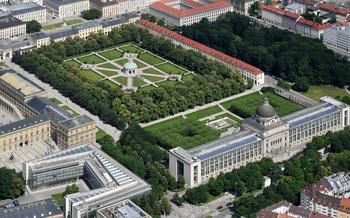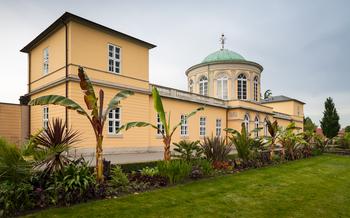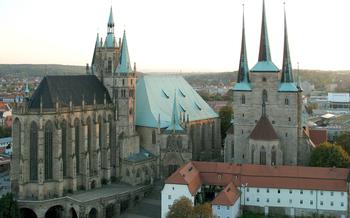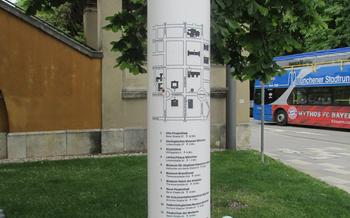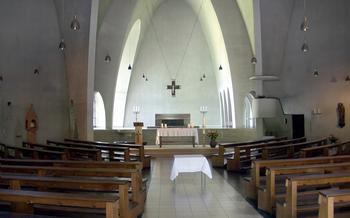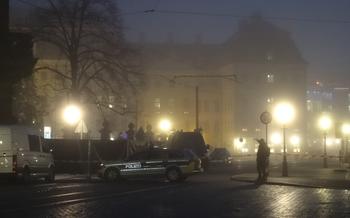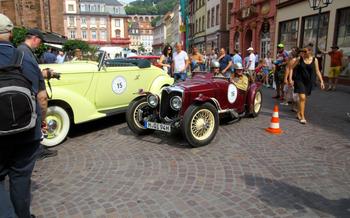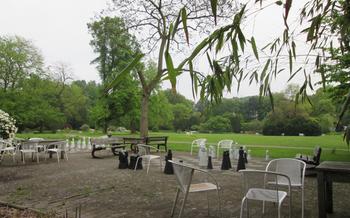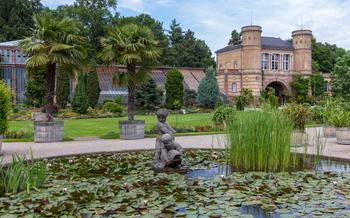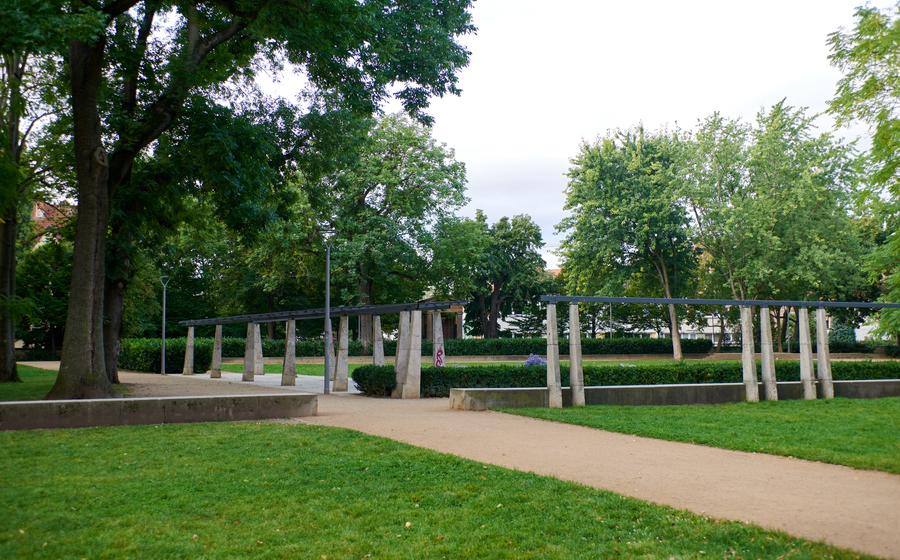
Brühler Garten
- The Brühler Garten: A Haven of Tranquility in Erfurt
- Location
- Features
- History
- Renaissance Roots: A Stroll Through History
- Themed Gardens: A Journey Through Plant Life
- Rose Garden: A Fragrant Oasis
- Medicinal Herb Garden: Nature's Healing Touch
- Rock Garden: A Rugged Landscape
- Japanese Garden: A Serene Escape
- Sculptural Treasures: A Showcase of Artistic Ingenuity
The Brühler Garten: A Haven of Tranquility in Erfurt
Amidst the vibrant tapestry of Erfurt, the Brühler Garten stands as an oasis of serenity, inviting visitors to immerse themselves in its verdant embrace. With a rich history that spans centuries, this enchanting garden has evolved into a beloved urban haven, offering a captivating blend of natural beauty, historical charm, and cultural significance.
Location
Nestled in the heart of the city, the Brühler Garten is conveniently situated within walking distance of Erfurt's main attractions, including the majestic Erfurt Cathedral and the historic Krämerbrücke, the city's iconic bridge lined with medieval half-timbered houses.
Features
Spread over 12 hectares (30 acres), the Brühler Garten boasts a diverse array of captivating features. Its meticulously landscaped grounds showcase an impressive collection of themed gardens, each offering a unique sensory experience. Visitors can wander through the vibrant Rose Garden, with its heady fragrance and riot of colors, or explore the Medicinal Herb Garden, where nature's healing properties are revealed. The Rock Garden, with its cascading waterfalls and intricate rock formations, provides a dramatic contrast to the serene Japanese Garden, where visitors can find tranquility among carefully placed stones and manicured greenery.
History
The Brühler Garten's origins can be traced back to the 16th century, when it was established as a private garden by the wealthy Brühler family. Over the centuries, it underwent several transformations, reflecting the changing tastes and styles of its successive owners. In the 18th century, the garden was redesigned in the Baroque style, and the Orangerie, a stunning example of Baroque architecture, was added to its grounds. In the 19th century, the garden was opened to the public, and it quickly became a popular destination for locals and visitors alike. Today, the Brühler Garten is a beloved city park, cherished for its serene atmosphere, historical charm, and botanical diversity.
Renaissance Roots: A Stroll Through History
The Brühler Garten has its roots firmly planted in the Renaissance period, a time of cultural and intellectual rebirth in Europe. During the 16th century, Erfurt, like many other German cities, embraced the ideals of the Renaissance, leading to a flourishing of arts, sciences, and culture. It was in this fertile environment that the idea for the Brühler Garten was born.
The garden's origins can be traced back to the year 1561 when the city council of Erfurt purchased a plot of land outside the city walls. The purpose of this acquisition was to create a pleasure garden for the enjoyment of the city's elite. The garden was designed in the Renaissance style, characterized by its symmetry, geometric patterns, and elaborate ornamentation.
The Brühler Garten soon became a popular destination for the city's upper classes. Notable personalities from Erfurt's history, such as the humanist Mutianus Rufus and the theologian Justus Menius, were known to frequent the garden. These intellectuals found inspiration and solace within its tranquil surroundings, engaging in philosophical discussions and admiring the beauty of the natural world.
The architectural legacy of the Renaissance period is still evident in the Brühler Garten today. The garden's layout, with its central axis and radiating paths, reflects the Renaissance fascination with order and symmetry. The elegant Orangerie, built in the early 17th century, is another testament to the garden's Renaissance origins. With its graceful arcades and delicate ornamentation, the Orangerie exudes the spirit of the Italian Renaissance, which had a profound influence on German architecture during that period.
Themed Gardens: A Journey Through Plant Life
The Brühler Garten offers a captivating journey through diverse plant life, showcasing themed gardens that cater to various interests and provide unique experiences.
Rose Garden: A Fragrant Oasis
A riot of colors and fragrances awaits visitors in the Rose Garden, home to over 300 varieties of roses, each blooming in its vibrant splendor. The air is filled with a sweet, heady scent as visitors stroll along the paths, admiring the delicate petals and intricate shapes of these floral wonders.
Medicinal Herb Garden: Nature's Healing Touch
Step into the Medicinal Herb Garden and discover the healing powers of nature. This garden is a treasure trove of herbs, each with its unique medicinal properties. Visitors can learn about the traditional uses of these plants and their benefits for various ailments.
Rock Garden: A Rugged Landscape
The Rock Garden offers a different kind of beauty, with its rugged terrain and diverse collection of alpine plants. Visitors can explore the crevices and nooks of this miniature landscape, discovering hidden gems and learning about the resilience of these plants in harsh conditions.
Japanese Garden: A Serene Escape
The Japanese Garden is a tranquil oasis inspired by the principles of Zen. Visitors can wander through this serene space, admiring the carefully placed rocks, manicured shrubs, and tranquil water features. The garden invites contemplation and reflection, offering a moment of peace and serenity amidst the bustling city.
Sculptural Treasures: A Showcase of Artistic Ingenuity
The Brühler Garten is not only a botanical wonder but also a treasure trove of sculptural masterpieces. These works of art, scattered throughout the garden, add an extra layer of charm and elegance to the already captivating landscape.
Fountains: The garden is adorned with several fountains, each with its unique design and charm. The most notable is the Hercules Fountain, a Baroque masterpiece depicting the mythical hero battling the Hydra. Its intricate details and impressive size make it a focal point of the garden.
Statues: Numerous statues grace the garden's paths and corners, adding a touch of personality and mythology. These sculptures depict various figures from Greek and Roman mythology, including Diana, Apollo, and Venus. Their serene expressions and elegant poses contribute to the garden's tranquil atmosphere.
Monuments: The Brühler Garten also boasts several monuments dedicated to notable figures and events. The most prominent is the Goethe Monument, honoring the famous German writer and poet Johann Wolfgang von Goethe. The monument features a bust of Goethe atop a pedestal, surrounded by a serene garden setting.
Historical Context: The sculptures in the Brühler Garten are not merely decorative elements; they carry historical significance. Many of these works were commissioned by wealthy patrons and influential figures who wanted to leave their mark on the garden. They reflect the artistic tastes and cultural influences of the time, providing a glimpse into Erfurt's rich history.
